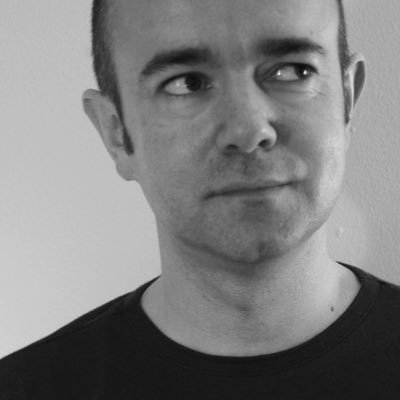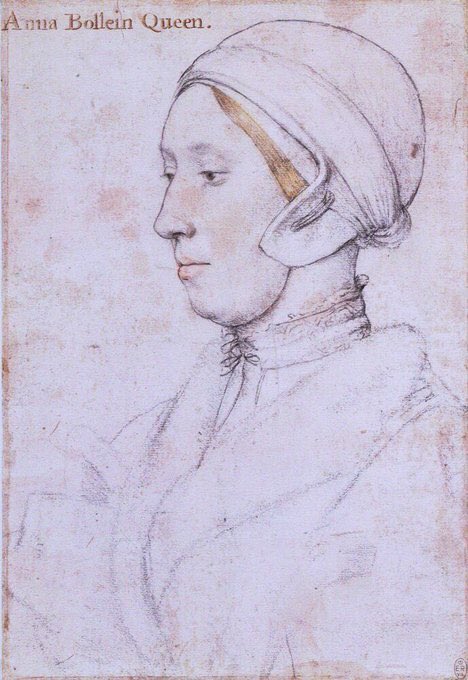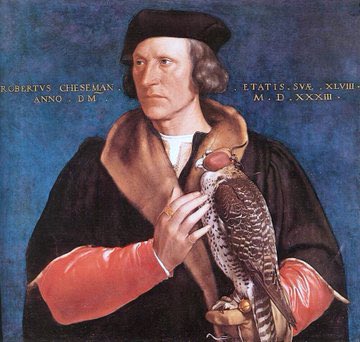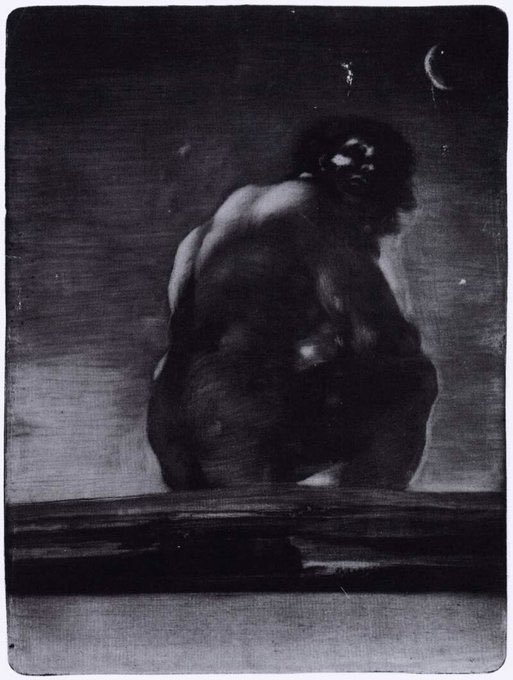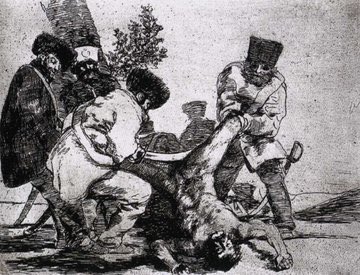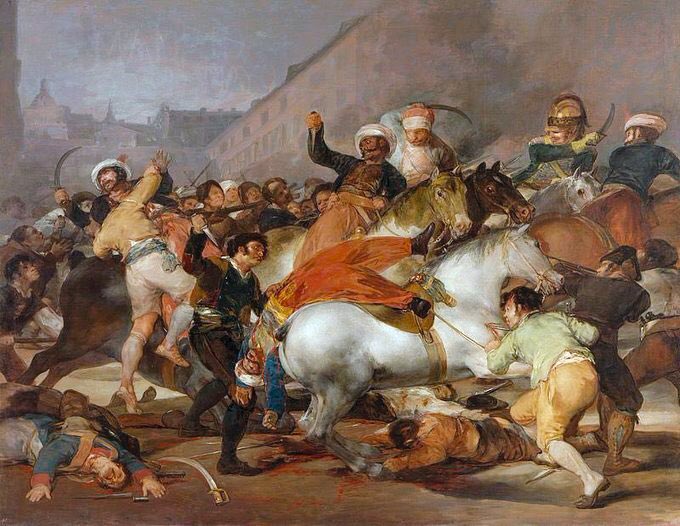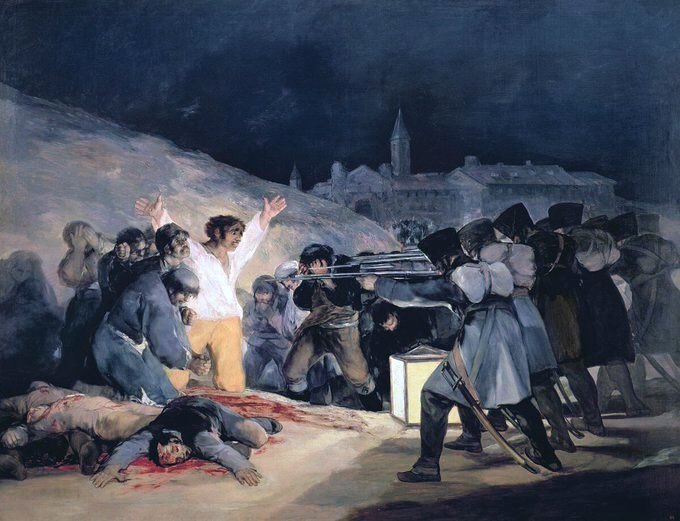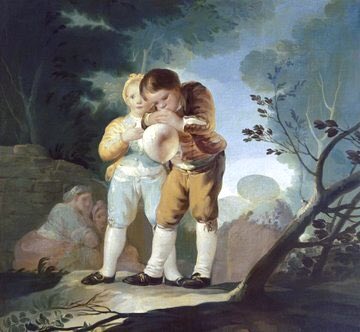Holbein painted Henry’s heir, Edward, in 1538. He had to depict a toddler with the dignity, majesty & spirituality of a future anointed king. He made a good fist of this impossible task. Edward (1538 & c1541), Sir Richard Southwell (1536) & Thomas Howard (1539-40)
Henry made Holbein his official painter in 1536. The following year the portrait of the King was painted by which he has become known to posterity. The original was destroyed in a fire but copies show the enduring propaganda of Holbein’s vision of 16th C majesty.
London too was to be riven by sectarianism, as a result of Henry VIII’s sociopathy. Holbein appears to have eschewed the newly de trop More for the arriviste Boleyn faction. Sir Thomas Elyot (c1532), Anne Boleyn (c1533), Thomas Cromwell (1533) & Robert Cheseman (1533)
Holbein painted some of his first portraits at this time. These included the Meyers, Boniface Amerbach (1519) & Erasmus (1523). The latter sent copies of his portrait all over Europe (propaganda was Erasmus’ forte) & as a result Holbein became famous too. Dead Christ (1521)
By 1517 he was in Lucerne & prob went to Italy too. He became fascinated with the work of Mantegna - both artists favouring crisp lines & clarity in their approach. He returned to Basel in 1519. Self Portrait (c1542) & two Mantegna portraits (c1460-70) & Francesco Gonzaga (1461)
At this stage in his life the isolation of his deafness, his ill health & his fears for his sanity led to his retreating to a farmhouse outside Madrid. There he created his Black Paintings in despair at the crackdown of the Spanish King & the Roman Catholic Church.
In 1814 with the restoration of The Spanish Monarchy he pleaded his non-involvement with the prior regime. He painted his disturbing The 2nd of May 1808 & The 3rd of May 1808 (1812). These are powerful & emotive images of the horrors of war.
From 1772 he created some 42 patterns for the Royal Tapestry Factory in the Rococo style. He also pursued etching at this time, a medium in which he still remains famous. These tapestry designs are relaxed & charming images.
Thread: Francisco Goya (1746-1828) was one of the greatest artists in history, a Romantic & a master of the portrait. He also created his superb black paintings which explored his troubled subconscious. The perceptive nature of his art is such that he’s v much a modern artist
The painter had an understanding with children. Here we see one of his greatest watercolours. His niece & ward, Violet, is shown playing with her dolls on her bed. Contrasting with these are more commercial puppy images - these provided the money he needed for his expenses
